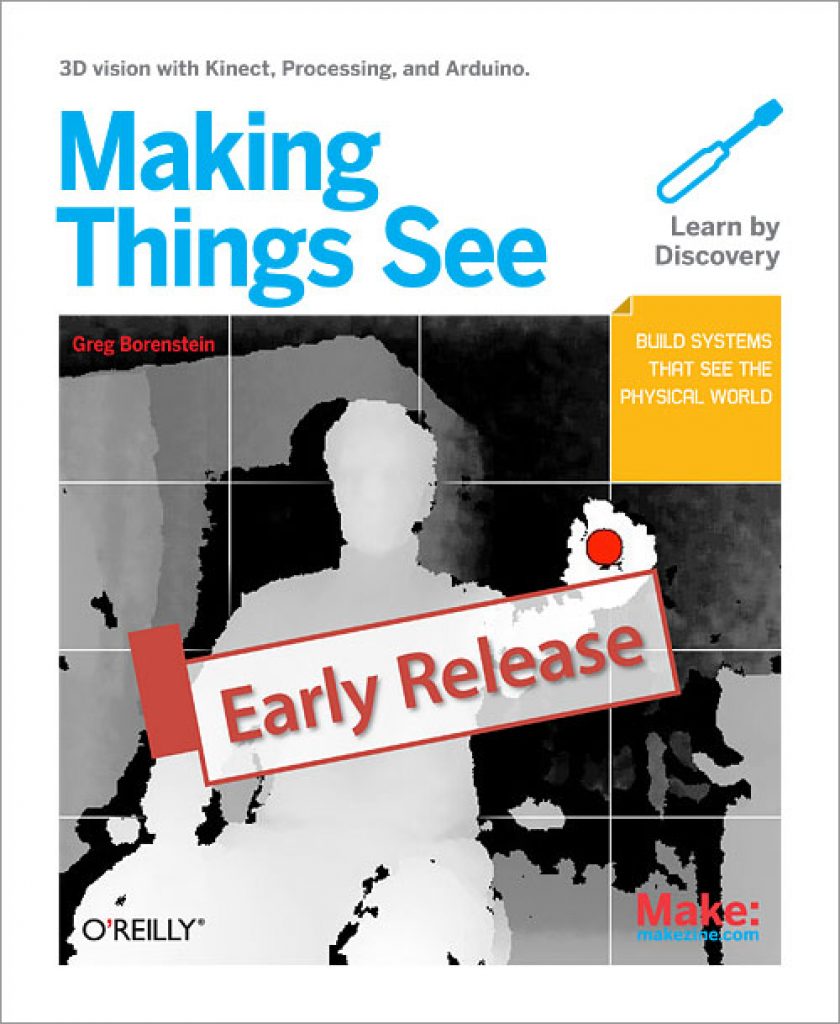One of the to-date reliable observations which guides my professional life is that a technology has "made it" when O'Reilly Media decides to cover it. Not that any of us in the embedded vision industry had any doubts until now, mind you, but it's time to extend congratulations to the concept of hacking the Microsoft Kinect. That's because a couple of days ago, I received a press release from O'Reilly announcing the publication of "Making Things See: 3D vision with Kinect, Processing, Arduino, and MakerBot" by Greg Borenstein, and available for $31.99 (various ebook formats) or $31.99 (print). From the description:
This detailed, hands-on guide provides the technical and conceptual information you need to build cool applications with Microsoft's Kinect, the amazing motion-sensing device that enables computers to see. Through half a dozen meaty projects, you'll learn how to create gestural interfaces for software, use motion capture for easy 3D character animation, 3D scanning for custom fabrication, and many other applications.
Perfect for hobbyists, makers, artists, and gamers, Making Things See (O'Reilly Media, $39.99 USD) shows you how to build every project with inexpensive off-the-shelf components, including the open source Processing programming language and the Arduino microcontroller. You'll learn basic skills that will enable you to pursue your own creative applications with Kinect.
- Create Kinect applications on Mac OS X, Windows, or Linux
- Track people with pose detection and skeletonization, and use blob tracking to detect objects
- Analyze and manipulate point clouds
- Make models for design and fabrication, using 3D scanning technology
- Use MakerBot, RepRap, or Shapeways to print 3D objects
- Delve into motion tracking for animation and games
- Build a simple robot arm that can imitate your arm movements
- Discover how skilled artists have used Kinect to build fascinating projects
I've requested a review copy, and am particularly curious to find out how robust (or not) the covered applications are, considering they're running on the fairly underpowered Arduino hardware platform based on an 8-bit AVR microcontroller. Stay tuned for a follow-up report after the tome arrives and I have a chance to peruse it.


